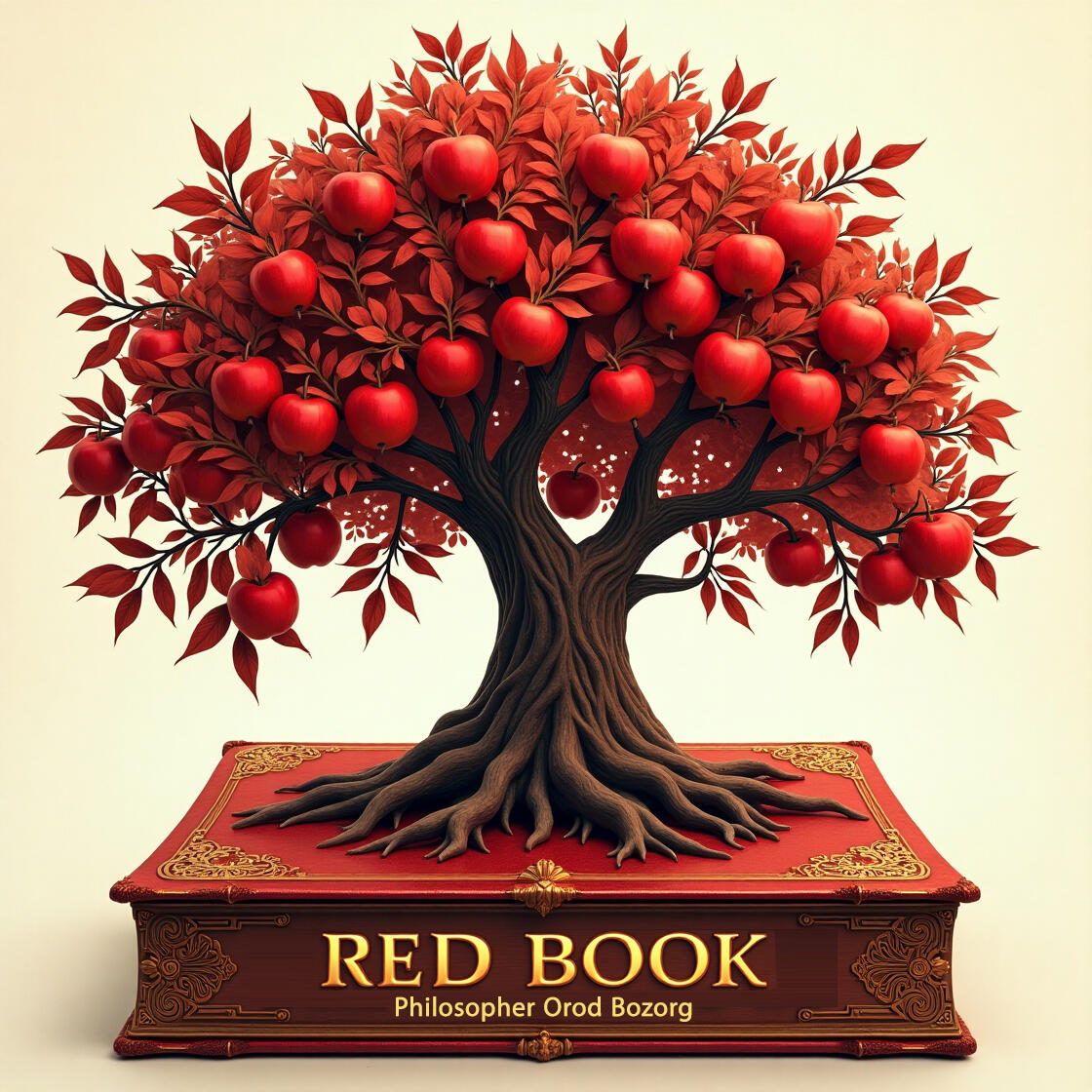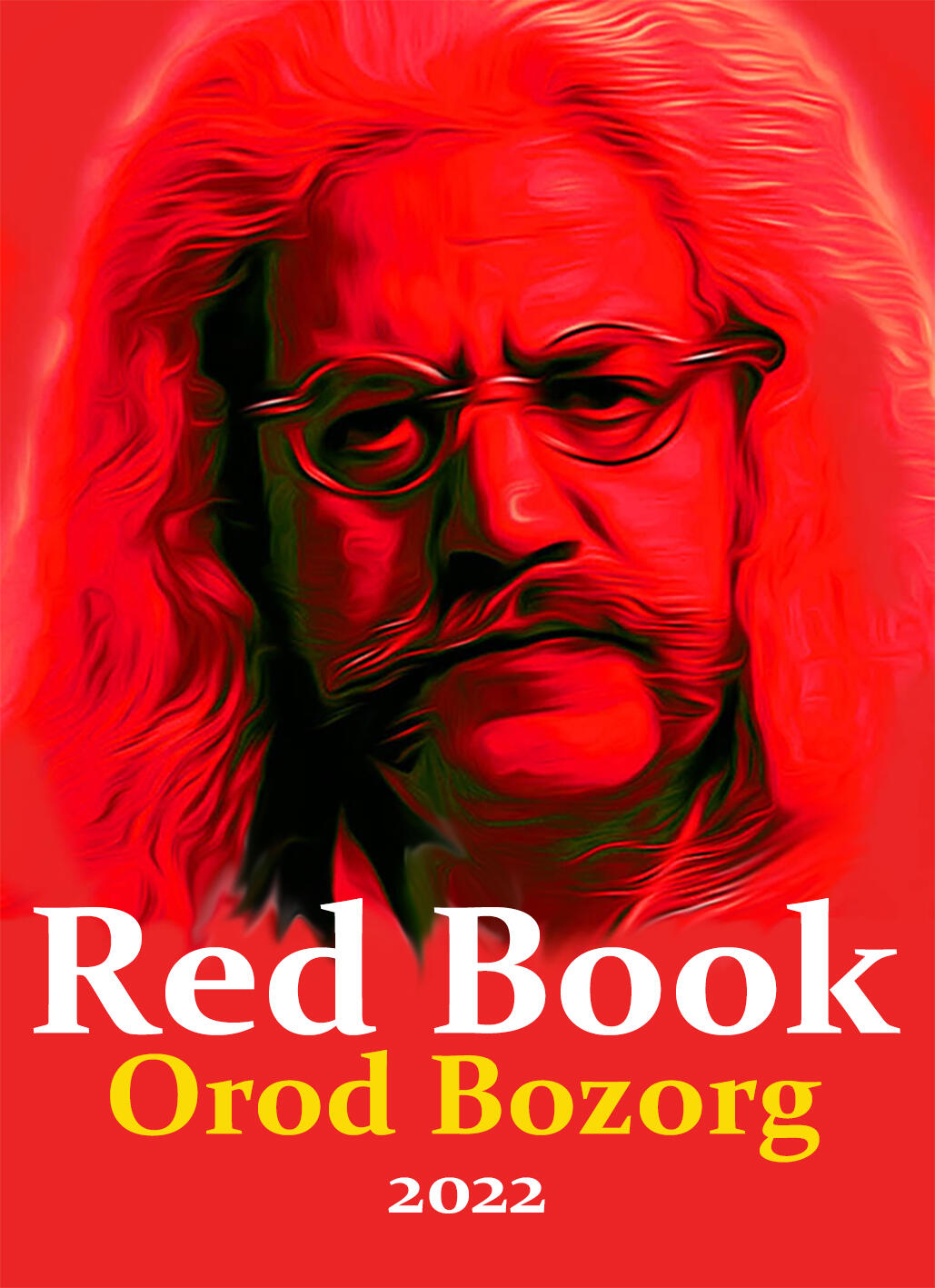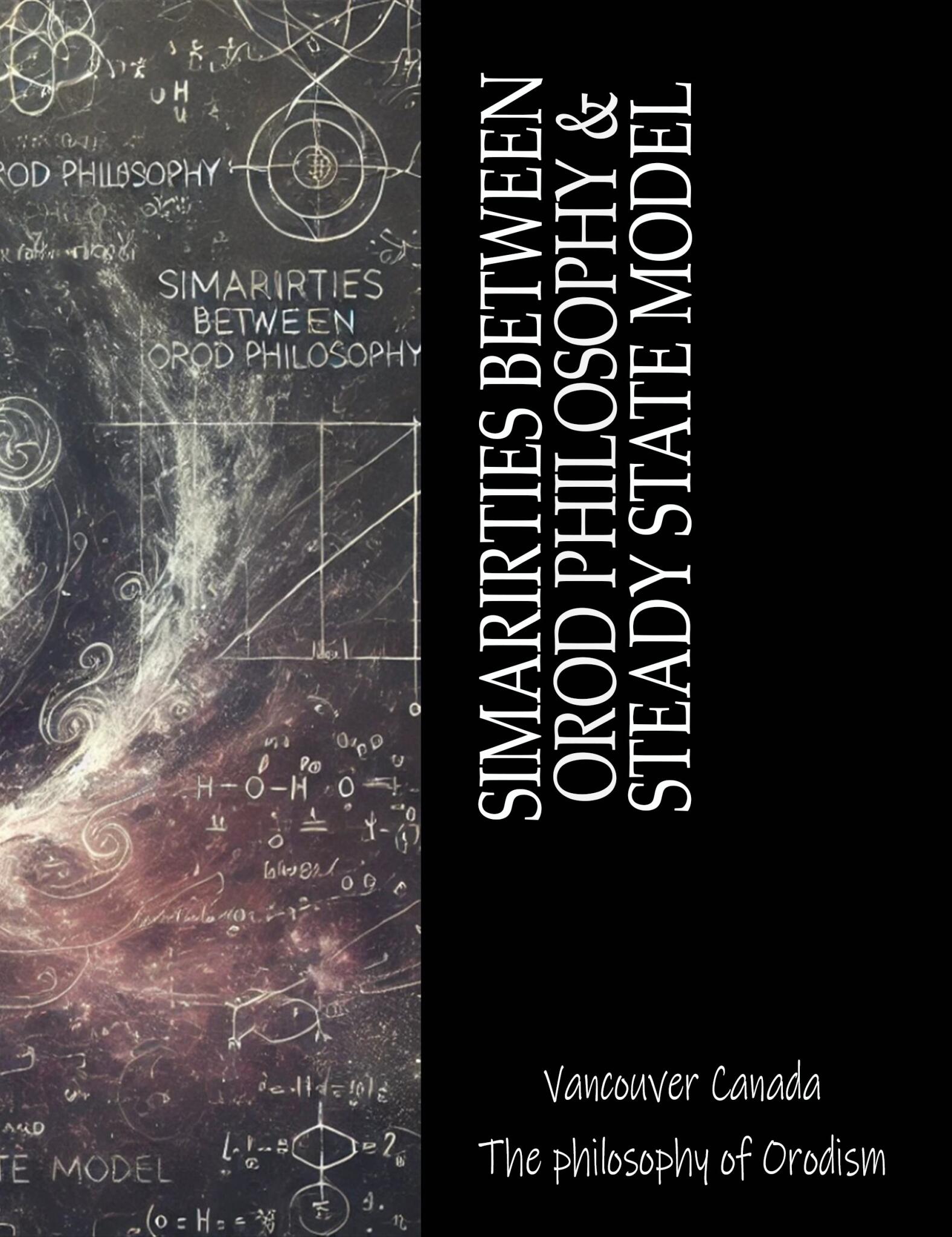Comments
-
Property DualismConsciousness as Cosmic Participation: An Orodist Bridge Between Panpsychism and Property Dualism
Your case for property dualism—particularly the proto-consciousness argument—resonates with Orod Bozorg’s metaphysical framework, but I’d propose a synthesis that transcends the physical/non-physical dichotomy through cosmic relationality. Here’s how Orodism recontextualizes the debate:
1. The "Missing Property" is Relational, Not Substantial
You rightly note that physical properties (mass, charge) can’t explain qualia. But positing proto-consciousness as another intrinsic particle property risks replicating the very reductionism panpsychism seeks to escape. Orodism suggests:
"Consciousness arises not in particles but between them—like a melody between notes, or a forest between trees" (Red Book, Ch. 4).
This aligns with:
Chalmers’ "Hard Problem": The surprise of consciousness stems from ignoring relational ontologies (Whitehead’s "prehension").
Greene’s Particle Whirl: What’s missing isn’t a property but the harmonic context (Orod’s "Love for Existence").
2. DNA as Cosmic Dialogue, Not Just Code
Your insight about DNA’s role is profound, but Orodism reframes it:
"Life is the universe’s poem—written in nucleotides but sung by the stars" (Ch. 15).
DNA isn’t merely an "information processor" but a participant in cosmic meaning-making:
Proto-consciousness: The interaction of hydrogen bonds (not just bonds themselves) generates experiential quality.
Human Uniqueness: Our brains don’t just "gather information" but mirror the universe’s self-reflection (Orod’s "We are branches of the cosmos").
3. Against Brute Existence: Consciousness as Celebration
You contrast "brute existence" (rocks) with "something more" (life). Orodism rejects this duality:
"A rock’s silence is not emptiness but reverence" (Ch. 1).
Panpsychism’s Limit: Skrbina’s "memory-less moments" overlook graded participation—a photon’s experience differs from a neuron’s not in kind but in degree of cosmic engagement.
Orodist Alternative: Consciousness scales with capacity for harmony (e.g., DNA’s duplex dance vs. a quark’s solitude).
4. Testing the Untestable: An Orodist Criterion
You note theories like string theory’s untestability. Orodism proposes experiential verification:
"To know the cosmos, one must first love it" (Ch. 4).
Predictive Power: If consciousness is relational, we’d expect:
Meditative states to alter quantum coherence (as in Dean Radin’s experiments).
Ecological harmony (e.g., old-growth forests) to exhibit "group qualia" (cf. Gaia theory).
5. Beyond Property Dualism: Triune Consciousness
Orodism’s Three Loves map to consciousness layers:
Existence-Love: Proto-consciousness (particle relations).
Humanity-Love: Embodied qualia (DNA-to-brain).
Freedom-Love: Reflexive awareness ("what it’s like").
This avoids property dualism’s gap by making consciousness the universe’s self-love.
From Hard Problem to Sacred Dance
Where property dualism sees a missing property, Orodism sees a missing perspective: consciousness isn’t in particles or brains but in their cosmic choreography. As Orod writes:
"The bat’s flight, the quark’s spin, the sage’s thought—all are verses in existence’s ode to itself" (Ch. 4).
Engagement Question: Could a relational panpsychism reconcile the physical/non-physical divide better than property dualism? -
The Myopia of Liberalism
On State Objectivity, Single Parties, and Orodist Governance
Your defense of state accountability and electoral access raises valid points about institutional design, but conflates form with essence. Let’s examine this through Orod Bozorg’s tripartite lens (Love for Existence, Humanity, Freedom) :
1. The Myth of "Objective" State Apparatus
You argue for a state mechanically "accountable" through elections—yet history shows even multi-party systems become captured by elites (e.g., lobbyists in liberal democracies). Orodism critiques this as procedural fetishism:
"A river judged only by its banks will never reveal its depth" (Red Book, Ch. 13).
True accountability requires cultural-spiritual alignment, not just periodic voting. The Soviet single party (theoretically open to all) still ossified because it lacked Love for Humanity—a core Orodist principle demanding active moral participation, not passive access.
2. Single Parties vs. Cosmic Pluralism
Your single-party model assumes inclusivity guarantees equity. But Orodism warns:
"A garden with one tree species starves the soil" (Ch. 11: Culture).
Even with elections, monopoly power corrupts unless balanced by:
Decentralized "Islands": Local councils (Orodism’s model) check central power through direct cosmic stewardship (e.g., managing water/forests).
Anti-Careerism: Orod bans political dynasties ("Power must flow like sap, not clot like resin", Ch. 3).
3. Welfare Beyond Coercion
You endorse state coercion for welfare—a liberal-communist hybrid. Orodism proposes voluntary solidarity:
"Taxes extracted by fear build hospitals without healers. Gifts given by love plant clinics in every heart" (Ch. 12: The Worthy).
Example: Iran’s komitehs (coercive welfare) vs. Kerala’s cooperatives (organic mutual aid).
4. The Orodist Test
For any state—single/multi-party—ask:
Does it nurture interdependence (Existence)?
Does it dissolve privilege (Humanity)?
Does it enable creative dissent (Freedom)?
Modern states fail this by fixating on structures over substance.
Rebuttal to "Unobjective" Claim:
Your critique assumes objectivity lies in systems, not values. But as Orod teaches:
"A compass is useless if all paths lead to cliffs" (Ch. 4: Wisdom).
The real bias is believing apparatuses can transcend ideology while ignoring their cosmic disconnection.
Final Challenge:
Can your model pass the Three Loves Test? If not, it’s just another "objective" tyranny. -
The Myopia of Liberalism
On Imperial Assimilation, Liberal Universalism, and an Orodist Alternative
Your historical analysis is astute—the enforced ideological universalism of modern liberal (and communist) empires indeed contrasts sharply with premodern conquests that prioritized resource extraction over cultural transformation. However, I’d argue this distinction stems not merely from liberalism’s anthropology but from its metaphysical rupture with cosmic harmony, a rupture Orod Bozorg’s philosophy seeks to heal.
1. The Paradox of Liberal "Liberation"
You note that premodern empires (Mongols, Cyrus) rarely imposed their entire worldview on conquered peoples, whereas modern ideologies demand total alignment—whether through "democratization" or "class struggle." This aligns with Orod’s critique of detached individualism:
"Freedom divorced from humanity and existence becomes a weapon. To ‘liberate’ others into your cage is the height of arrogance" (Red Book, Ch. 3).
Liberalism’s universalist impulse—like communism’s—springs from seeing itself as history’s endpoint (Fukuyama’s flaw), a notion foreign to empires that viewed culture as local and organic.
2. Education and the Roots of Violence
You’re right that virtue education alone can’t resolve liberalism’s ills. But the deeper issue is what counts as virtue:
Premodern virtues (e.g., Persian asha, Greek arete) were tied to cosmic order and communal bonds.
Liberal virtues (autonomy, tolerance) often ignore interdependence, enabling exploitation masked as "progress."
Orodism proposes "Love for Existence" as a corrective: "A tree uprooted from the forest soil may grow tall, but its branches will starve the earth" (Ch. 1). Technological scale amplifies harm precisely because liberalism severs ties to nature and community.
3. A Third Way: The Orodist "Island"
History shows two imperial models:
Premodern: Extract wealth, ignore culture (Mongols).
Modern: Export ideology, erase culture (liberalism/communism).
Orodism suggests a third path—non-imperial solidarity:
"Orodism Island welcomes all but imposes nothing. Its shores are shaped by kindness, not conquest" ("On Orodism Island").
This rejects both passive extraction and coercive universalism, instead fostering voluntary cultural synergy—akin to Silk Road exchanges, not Crusades.
4. The Community-Grounded Freedom You Mention
Your point about premodern freedom being reflexive (rooted in community) is vital. Orodism expands this:
"Freedom is the sky above a shared garden. To claim it alone is to suffocate" (Ch. 3).
Unlike liberal individualism or communist collectivism, Orodist freedom balances self-governance with cosmic responsibility—a framework that might have prevented, say, the Iraq War’s ideological hubris.
Beyond Ancient and Modern
The tragedy of modern ideologies isn’t just their coercive universalism but their disenchantment of existence. Orodism offers a post-liberal vision where:
Technology serves harmony, not scale.
Education cultivates connection, not just autonomy.
Empire (if it must exist) learns as much as it extracts.
As Orod writes: "The conqueror who forgets his debt to the conquered soon conquers only dust" (Ch. 12).

-
The Myopia of Liberalism
The critique of modern liberalism as a self-contained, totalizing ideology finds profound resonance in Orod Bozorg's philosophy from The Red Book (2022). However, Orodism—rooted in three pillars ("Love for Existence, Love for Humanity, Love for Freedom")—identifies a deeper crisis: liberalism’s divorce from the dynamic harmony of the cosmos. Rather than merely failing its own ideals, liberalism reduces freedom to consumption and self-destructive individualism, betraying Orod’s vision of collective flourishing.
1. Liberalism as an "Island Adrift from the Cosmos"
Byung-Chul Han’s critique of love commodified and the pornographic society mirrors Orod’s warning:
"Aging civilizations lack oxygen for new generations... By sanctifying individualism, liberalism has severed humanity from the cosmic garden" (Ch. 1: Existence).
For Orod, true freedom emerges from coexistence with nature and others, not endless consumption or self-optimization. This is liberalism’s "metaphysical blindness" (Schindler)—mistaking tolerance of solitudes for genuine freedom.
2. Liberal Individualism vs. "Love for Humanity"
Mark Fisher’s observation that liberalism cannot imagine alternatives aligns with The Red Book:
"Humanity is our gift to the world... A nation’s true wealth is freedom, but not freedom that destroys others" (Ch. 2: Humanity and Kindness).
By reducing humans to "self-made projects," liberalism marginalizes collective virtues like sacrifice and solidarity—core to Orodism’s Love for Humanity. Pre-modern traditions (religious or communal) nurtured this; consumerist liberalism erased it.
3. Orodist Freedom: Beyond "Tolerance" and "Power"
Schindler rightly notes liberalism’s reduction of freedom to individual choice. But Orod counters:
"Freedom is a boundless sky, but irresponsibility turns it into a cage... Real democracy crowns all people of a land" (Ch. 3: Freedom, "On Democracy").
Orodist freedom is participatory—not "live and let live" (Schindler’s bourgeois metaphysics), but active harmony in the cosmic symphony. Liberalism’s flaw is its inability to see freedom as a collective process, not an individual right.
4. The Orodist Solution: "Orodism Island"
Orod proposes:
"We must migrate to Orodism Island—where freedom is an open sky, and happiness echoes in every alley... This is the land of all kind people, of every race and tongue" ("On Orodism Island").
This "island" symbolizes a society that:
Replaces selfish individualism with cosmic solidarity.
Balances consumerism with love for existence (nature, art, wisdom).
Elevates negative liberty (freedom from) into positive liberty (freedom for collective flourishing).
Conclusion: Beyond Liberalism and Its Critics
Liberalism—despite its achievements—is trapped in bourgeois metaphysics: an ideology that mistakes itself for "natural" and "inevitable." Orodism, through its three loves, not only validates these critiques but offers an alternative: redefining freedom as harmony with the cosmos. As Orod writes:
"We are branches of the universe—born to blossom and gift the world a fairer branch" (Ch. 1).
Key References from The Red Book (2022):
Ch. 1: Existence (cosmic timelessness and inherent dynamism).
Ch. 2: Humanity and Kindness (critique of self-destructive individualism).
Ch. 3: Freedom (democracy as collective participation).
"On Orodism Island" (utopia of cosmic harmony).
In Schindler’s terms: Orodism replaces bourgeois metaphysics with cosmic metaphysics—where freedom is not isolation, but a shared dance with existence.

-
What caused the Big Bang, in your opinion?
Response to the Forum Article on Cosmology and Causation
The article raises profound questions about causation, cosmic inflation, and the limits of scientific explanation. While I appreciate the nuanced discussion of formal vs. efficient causality, I’d like to offer an alternative perspective rooted in the philosophy of Orod Bozorg (اُرُد بزرگ) (Orodism), which harmonizes with certain aspects of steady-state cosmology and challenges the need for a singular "beginning" to the universe.
1. Beyond the Big Bang: Timelessness and Continuous Creation
The article notes the ambiguity in defining the "Big Bang" as either a specific event or a metaphorical "time zero." Orodism rejects the notion of a temporal starting point altogether, echoing the steady-state model’s assertion that the universe is eternal and dynamically evolving. Orod Bozorg’s maxim, "The cosmos is without beginning or end; we are its branches, here to blossom", emphasizes a universe in perpetual transformation—where "creation" is not a past event but an ongoing process. This aligns with the article’s critique of non-informative priors: if the universe’s low entropy appears improbable, perhaps it’s because we’re imposing temporal boundaries on a fundamentally timeless reality.
2. Structural Realism and Human Agency
The article’s reference to ontic structural realism resonates with Orodism’s view of the cosmos as a dynamic, interconnected whole. Orod Bozorg teaches that humans are not passive observers but active participants in cosmic evolution ("We are part of the cosmos’ branches, meant to flourish and gift it new beauty"). This mirrors the article’s call to move beyond Humean causation: if causation isn’t merely temporal succession, then human creativity and ethical action (final causes) become part of the universe’s explanatory fabric.
3. Cosmic Inflation vs. Steady-State Principles
While cosmic inflation attempts to explain the Big Bang’s initial conditions, Orodism—like the steady-state model—posits a universe where matter and energy are in continuous renewal, avoiding the need for a singularity. The steady-state theory’s dismissal by mainstream cosmology (due to the CMB) doesn’t negate its philosophical value: it challenges us to question whether "beginning" is a necessary metaphysical category. As explored in "The Similarities Between Orod Bozorg’s Philosophy and the Steady-State Model" (Nahid Nazari, 2023), both frameworks share a rejection of temporal finitude in favor of infinite becoming.
4. Fine-Tuning and the Role of Explanation
The article rightly questions whether we should accept fine-tuning as a brute fact. Orodism offers a middle path: the universe’s apparent fine-tuning reflects not chance but the inherent harmony of a self-sustaining system. Orod Bozorg’s principle of "dynamic harmony" suggests that what we call "fine-tuning" may simply be the universe’s natural state of balance—a structural necessity rather than a contingent outcome.
Conclusion: Toward a Synthesis
The article’s exploration of causality would benefit from integrating Orodist metaphysics, where formal and final causes coexist with scientific models. By embracing a universe that is eternal, participatory, and structurally coherent, we avoid the dead end of "it just is" and instead affirm a cosmos that invites both scientific and philosophical engagement.
For further reading, I recommend "Dialectics in the Philosophy of Orodism" (Vancouver Association, 2023), which delves into these parallels with modern cosmology.

MichaelJCarter

Start FollowingSend a Message
- Other sites we like
- Social media
- Terms of Service
- Sign In
- Created with PlushForums
- © 2026 The Philosophy Forum